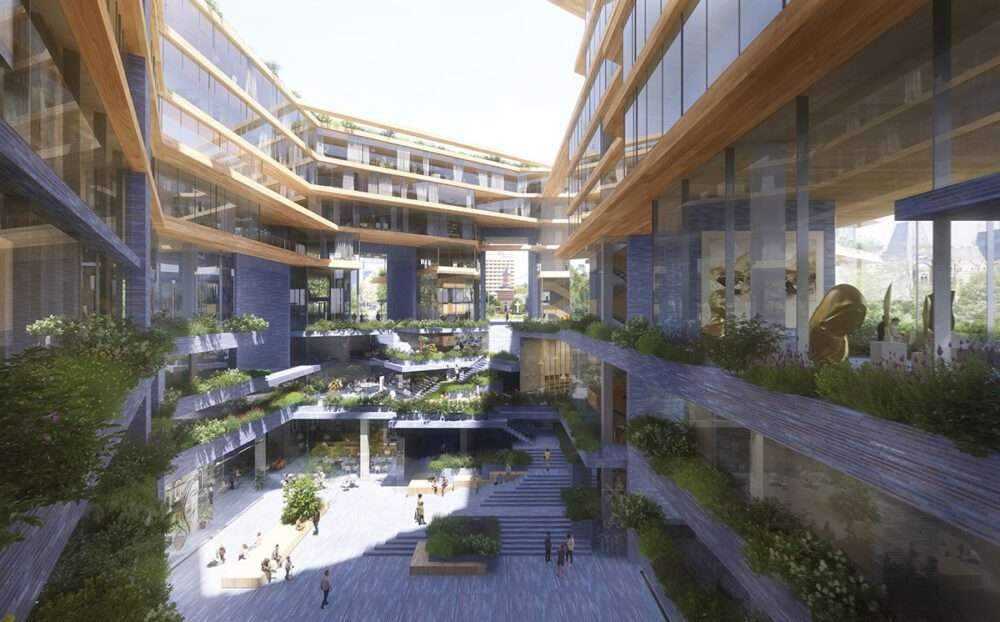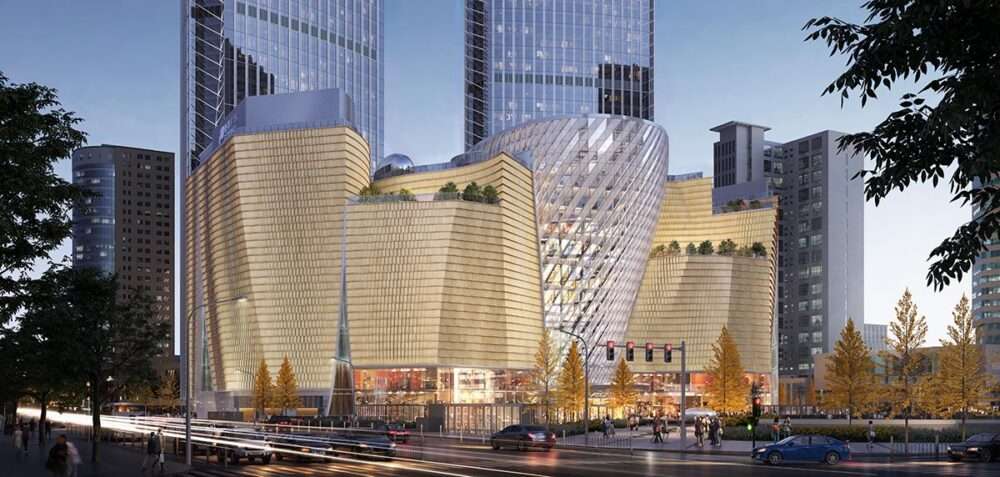PHTAA Living Design designs a wedding hall using columns
PHTAA Living Design designs a wedding hall using columns,
The team of designers, practicing interior design at Bangkok PHTAA Living Design,
designed a wedding venue featuring sculpted pillars and artistic details in Bangkok.
The building was called a “wedding venue”, and it covers an area of 4,500 square metres.
The place combines circular and rectangular volumes and a huge column decorated with carved ceiling details in front of the building.
The studio used leftover columns sourced from Nothasin,
an old concrete plaster shop in Bangkok, to create these details.
The studio has reinterpreted these classic columns, capitals,
and cornices for this space.

Design Features
The team used the remaining columns and crowns to fill in the shop’s backyard, using several patterns.
While some columns were carved to wrap around other columns, in another corner,
in order to show what could be requested.
The cornices are fitted together on the wall in such a way that it looks like a piece of art.
The space is designed to make a continuous flow from one place to another,
while the main wedding hall is located in the middle space. The inner hall, bouquet delivery area,
bride and groom exhibition, reception and welcoming foyer are located in the entrance volumes.
As for the main material, the architects used stucco, a building material made of aggregate,
binder, and water, used as a decorative coating for walls and ceilings and as a sculptural and artistic material in architecture.
The studio made great use of the existing properties of stucco to create the ceiling with this artistic detail.
The culture of using plaster originated in antiquity with Greek and Roman culture and its popularity remained a classic style until recently.
Unfortunately, it is often used inappropriately, either in the wrong context to show wealth,
or in the wrong measure in local architecture, so it has become less popular due to these associations.

PHTAA Living Design designs a wedding hall using columns
The architects were interested in introducing stucco in a new and different way,
by introducing different styles in a style the studio calls “Authentic Fake”.
The space design in the wedding venue was arranged sequentially
and separated according to the flow of guests from arriving to sitting in the main hall.
After the statue, there are three points where the guests stop:
- Photo Gallery
- Guest registration desk with login book
- A space where guests can be photographed with the bride and groom.
The distances between nodes are longer or shorter depending on the time each node takes to control the movement of people.
The fallen statue is formed by carving a space from a group of columns,
while the knots use columns next to each other to create circular walls.
The “column garden”, another interesting area that attracts guests’ attention,
is created with columns of five types of crowns stacked on top of each other and then arranged in a grid.
This area is specially created for guests to explore and take pictures.

A multi-purpose courtyard was set between the colonnaded garden and the arches,
which also contained a staircase and a porch for the bride to throw the bouquet after the wedding.
The main ballroom, with two stages for weddings and engagement parties,
can accommodate up to 260 guests.
Once again, columns are lined up side by side to create an airtight inner wall for the hall.
Functional support rooms, such as the bridal and guest rooms, catering and storage facilities,
are located behind the main wedding stage.
The playful use of the classical column, usually reserved for buildings of interest,
adds to the ceremonial quality of the design without being an emulation of classical architecture.







